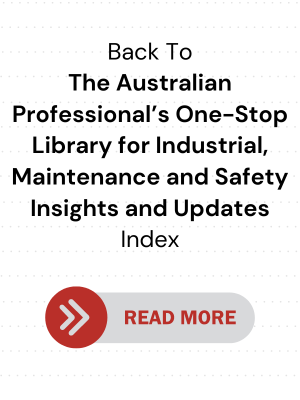Diagnosing Improper Belt Tension or Misalignment

.png)
Many people keep belts in stock -- and here’s a guide to store and handle them properly -- because sometimes you never know when one or two will snap, and you don’t want to be scrambling to get your hands on replacements. Nevertheless, maintaining proper belt tension and alignment of your belts currently installed is crucial for optimal machine performance, efficiency and longevity (and avoiding unplanned downtime).
Moreover, early detection of belt issues allows for timely action, avoiding costly repairs and potential accidents. Let's explore these telltale signs.
Signs of Improper Belt Tensioning
|
Signs |
Description |
Negative Impact |
|
Premature belt wear |
Cracking, fraying or excessive wear on the edges, especially on the side facing away from the tensioner |
Frequent belt replacement, increased maintenance costs & unexpected machine downtime |
|
Squealing or slipping |
A high-pitched squealing noise, especially during machine startup or under load, is a classic symptom of a loose belt slipping on the pulley |
Reduced power transmission, decreased machine efficiency, premature belt wear and potential damage to pulleys and bearings |
|
Belt overheating |
Belt surface feels excessively hot to the touch due to increased friction from slippage or excessive tension |
Accelerated belt degradation, potential fire hazard* & damage to adjacent components |
|
Vibrations |
Noticeable machine vibrations, particularly at higher speeds, caused by uneven belt movement |
Reduced machine accuracy, potential damage to bearings and other sensitive components & operator discomfort |
|
Bearing failure |
Excessive tension puts undue stress on bearings, leading to premature wear and potential failure |
Costly bearing replacements, significant machine downtime & potential safety hazard |
*In some cases and industries, you may need to use fire-resistant anti-static belts (FAQs and quick guide here)
Signs of Belt Misalignment
|
Signs |
Description |
Negative Impact |
|
Uneven belt wear |
One side of the belt shows more wear than the other, indicating that it is not tracking correctly on the pulleys |
Premature belt failure, decreased machine efficiency, potential damage to pulleys and bearings |
|
Belt tracking off the pulley |
Belt rides off the edge of the pulley or flips over completely, often accompanied by a slapping sound |
Immediate machine stoppage, potential belt damage & safety hazard if the belt becomes entangled in other components |
|
Excessive belt dust |
A buildup of fine black dust around the belt drive system, caused by abrasion from misalignment |
Increased maintenance and cleaning requirements, potential health hazard for operators, indicator of premature belt wear |
|
Premature pulley wear |
Uneven wear patterns on the pulley faces, indicating that the belt is not making full contact |
Costly pulley replacements, reduced machine efficiency, potential for belt slippage and further damage |
|
Machine noise |
Abnormal noises such as rumbling, knocking or grinding from the belt drive system, indicating misalignment-induced stress and friction |
Operator discomfort, potential for component damage if left unaddressed & decreased machine efficiency |
Important Considerations for Machine Operators
- Regular inspections: Conduct routine visual checks of the belt drive system for signs of wear, misalignment or damage.
- Set replacement: Change the entire set when one of them snaps, because the remaining ones are likely of similar age and wear, making them susceptible to failure soon, which could lead to (1) costly production losses, (2) redundant labour for replacement and (3) unplanned downtime.
- Tension checks: Use a belt tension gauge or tension tester to ensure proper tension according to manufacturer specifications.
- Alignment tools: Use laser alignment tools or straightedges to verify proper pulley alignment.
- Timely maintenance: Address any signs of improper tension or misalignment promptly to prevent further damage and downtime.
- Safety first: Always follow lockout/tagout procedures before working on belt drive systems to prevent accidental machine startup.
By the way, here is where a maintenance kit like this one from Gates comes in handy. It has the essential tools and more to help keep your belts in good shape.
By recognising these signs and taking proactive steps to maintain proper belt tension and alignment, you play a vital role in ensuring machine uptime, productivity and safety in your industrial setting. Remember, a well-maintained belt drive system is the backbone of efficient machine operation. If you encounter any concerns beyond your expertise, don't hesitate to seek assistance from qualified maintenance personnel.
AIMS' Note on Safe Use of Belt-Driven Systems
- Power down: Before any inspection, maintenance, or adjustment, make sure to completely shut down the power to the machine and apply a lockout/tagout (LOTO) device to prevent accidental restarts.
- Right belt for the system: Keep in mind that v-belts (especially cogged / notched / wrapped belts) are different from synchronous /timing / ‘toothed’ belts. Some mistake the cogs for teeth but remember that cogged belts run on V-shaped pulleys that do not have teeth. Are you operating where flammable substances are present? Maybe you need fire-resistant anti-static (FRAS) belts – or maybe heat-resistant and oil-resistant belts will do. We compared them in this FAQ.
- Safe attire: Avoid loose clothing, jewelry and long hair that could get caught in the moving parts. Ensure proper fit of workwear without compromising comfort, dexterity and protection. Tie back long hair and secure loose items.
- Safeguards in place: Never operate a belt-driven system with the guards removed or bypassed. These guards are there for your protection.
- Maintenance and replacement: Regularly inspect belts and pulleys for wear and tear. Maintain proper belt tension and alignment as specified by the manufacturer. When replacing the belt, make sure you get the proper fit and measurement of the system. These accessories and maintenance kits (eg alignment tools, belt measurers, pulley gauge sets, spacers, tensioners etc) come in handy.
- Cleanliness: Keep the area around belt drives free of debris and clutter that could get caught or cause a fire hazard.
(Refer to our content library's sub-index of articles about belt-driven systems and electric motors for more information.)



.png)